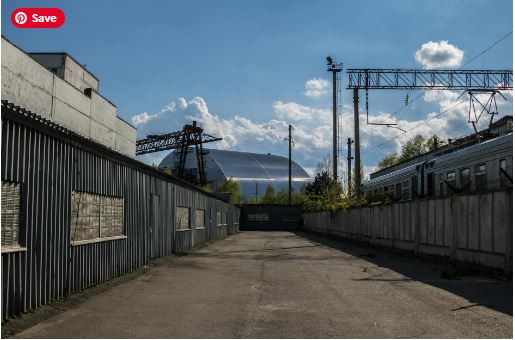opinion investing in more nuclear power cant be our solution to climate change Why Investing in Nuclear Energy Cannot be the Sole Solution to Climate Change
As nations grapple with the formidable challenge of climate change, the question of whether to expand nuclear power as a sustainable solution provokes heated debate. At first glance, nuclear energy offers a tempting promise of vast, low-carbon power. However, is it truly the panacea for our environmental woes? This introduction delves into why investing heavily in nuclear power might not be the silver bullet we hope for in combating climate change. From the risks it poses to the substantial investments required, we will explore alternative solutions that could prove both safer and more effective. Join us as we unpack the complexities of nuclear power and its role in our sustainable future.
Challenges of Nuclear Power in Addressing Climate Change -opinion investing in more nuclear power cant be our solution to climate change
Nuclear power has been proposed as a solution to combat climate change; however, it comes with its own set of challenges that raise concerns regarding its effectiveness in addressing global warming. Let’s delve into some of the major obstacles associated with nuclear power in the context of climate change mitigation.
Safety Concerns -opinion investing in more nuclear power cant be our solution to climate change
One of the primary challenges of nuclear power is its safety implications. Nuclear accidents such as the infamous Chernobyl and Fukushima disasters have demonstrated the catastrophic impact on the environment and public health. The Chernobyl disaster in 1986 led to long-lasting environmental contamination and health issues for the surrounding populations. Similarly, the Fukushima Daiichi nuclear accident in 2011 resulted in the release of radioactive materials into the atmosphere and ocean, posing risks to both humans and ecosystems.
 Photo by Gáspár Ferenc
Photo by Gáspár Ferenc
Waste Management Issues
Another significant challenge is the management of nuclear waste. The disposal of radioactive waste generated by nuclear power plants presents long-term environmental and safety concerns. The safe storage and disposal of nuclear waste remain a critical issue, with the potential for leaks or accidents that could contaminate the environment and endanger public health. Addressing the challenges of nuclear waste disposal is essential for the sustainable operation of nuclear power plants.
Cost-Intensive Nature
The high capital costs associated with building and maintaining nuclear power plants present a considerable barrier to widespread adoption. The construction of nuclear facilities requires significant investment in infrastructure and technology, making nuclear power a costly energy option. Moreover, the expenses involved in ensuring the safety and security of nuclear facilities further contribute to the overall cost-intensive nature of nuclear power generation. Balancing the economic viability of nuclear energy with its environmental benefits remains a key challenge for policymakers and energy experts alike.
Renewable Energy Alternatives
Renewable energy sources play a crucial role in the transition to a more sustainable and eco-friendly future. These energy sources, such as solar, wind, hydro, and geothermal energy, offer a myriad of advantages in combating climate change while reducing our reliance on fossil fuels.
Advantages of Renewable Energy Sources
Solar Energy:
Harnessing energy from the sun through solar panels not only produces electricity but also reduces greenhouse gas emissions. Solar energy is abundant, renewable, and can be harnessed anywhere with sunlight, making it a versatile and eco-friendly choice for power generation.
Wind Energy:
Utilising wind turbines to generate electricity has minimal environmental impact compared to traditional power plants. Wind energy is abundant and harnessing it helps in reducing carbon emissions while providing a sustainable energy source for communities.
Hydro Energy:
Hydropower, generated from flowing water, is a reliable and clean source of energy. By utilising the power of water, hydro energy contributes to reducing reliance on fossil fuels and serves as a renewable energy option with low greenhouse gas emissions.
Geothermal Energy:
Extracting heat from beneath the Earth’s surface, geothermal energy is a sustainable and constant energy source. It produces minimal emissions, contributes to reducing carbon footprints, and offers a stable power supply for various applications.
Technological Advancements in Renewables
Advancements in renewable energy technologies have revolutionised the efficiency and affordability of harnessing clean energy sources. Innovation in solar panel design, wind turbine efficiency, hydroelectric power systems, and geothermal heat extraction methods has significantly improved the performance and accessibility of renewable energy.
From enhancing energy storage solutions to increasing the power output of renewable sources, technological innovations continue to drive the renewable energy sector towards a more sustainable and cost-effective future. These advancements not only benefit the environment by reducing carbon emissions but also pave the way for a more resilient and renewable energy infrastructure globally.
 Photo by Jem Sanchez
Photo by Jem Sanchez
Policy and Public Perception
Government Support for Renewable Energy
Government policies play a crucial role in driving the transition towards sustainable energy sources. By incentivising the development and adoption of renewable energy technologies, governments can steer the shift away from fossil fuels towards cleaner alternatives. Initiatives such as feed-in tariffs, tax credits, grants, and subsidies can encourage investment in solar, wind, hydroelectric, and other renewable power sources. These measures not only promote environmental sustainability but also foster innovation and job creation within the green energy sector.
 Photo by Pixabay
Photo by Pixabay
Public Resistance to Nuclear Power
Public perception and acceptance are vital considerations in the energy transition process, particularly regarding nuclear power. Despite its potential as a low-carbon energy source, nuclear energy faces significant resistance from the public due to concerns over safety, nuclear waste disposal, and the risks of accidents. Addressing these apprehensions and ensuring transparency in communication are essential for building trust and garnering support for any energy strategy. Engaging with communities, providing education, and fostering dialogue can help bridge the gap between public apprehension and the need for sustainable energy solutions. It is essential to acknowledge and respond to public concerns to ensure a successful energy transition that aligns with societal expectations and values.
Conclusion
After exploring the arguments against investing more in nuclear power as the solution to climate change, it is evident that alternative renewable energy sources offer a more sustainable path forward. By considering the challenges and risks associated with nuclear power, individuals and policymakers can make informed decisions about the future of energy production and environmental conservation.
Sustainable Energy Solutions
Exploring renewable energy sources such as solar, wind, and hydropower presents a promising alternative to nuclear power. These sources are abundant, pose lower environmental risks, and offer long-term sustainability. Embracing these technologies can reduce greenhouse gas emissions and promote a greener future for generations to come.
Importance of Environmental Preservation
Preserving the natural environment is crucial in combatting climate change. Investing in nuclear power may contribute to environmental degradation through radioactive waste and potential accidents. By prioritising sustainable energy solutions, we can safeguard ecosystems and mitigate the impact of global warming on biodiversity.
Public Health and Safety
The health and safety implications of nuclear power cannot be ignored. Accidents such as Chernobyl and Fukushima highlight the catastrophic consequences of nuclear disasters. Embracing renewable energy can protect communities from the health risks associated with nuclear radiation and ensure a safer living environment for all.
Global Cooperation for a Sustainable Future
Addressing climate change requires global cooperation and collective action. By investing in renewable energy technologies on an international scale, countries can work together towards a sustainable future. Collaboration in research, development, and implementation of green energy solutions is key to combating climate change effectively.
 Photo by MART PRODUCTION
Photo by MART PRODUCTION














